5 Easy Recipe Swaps To Make Your Holiday Baking Healthier
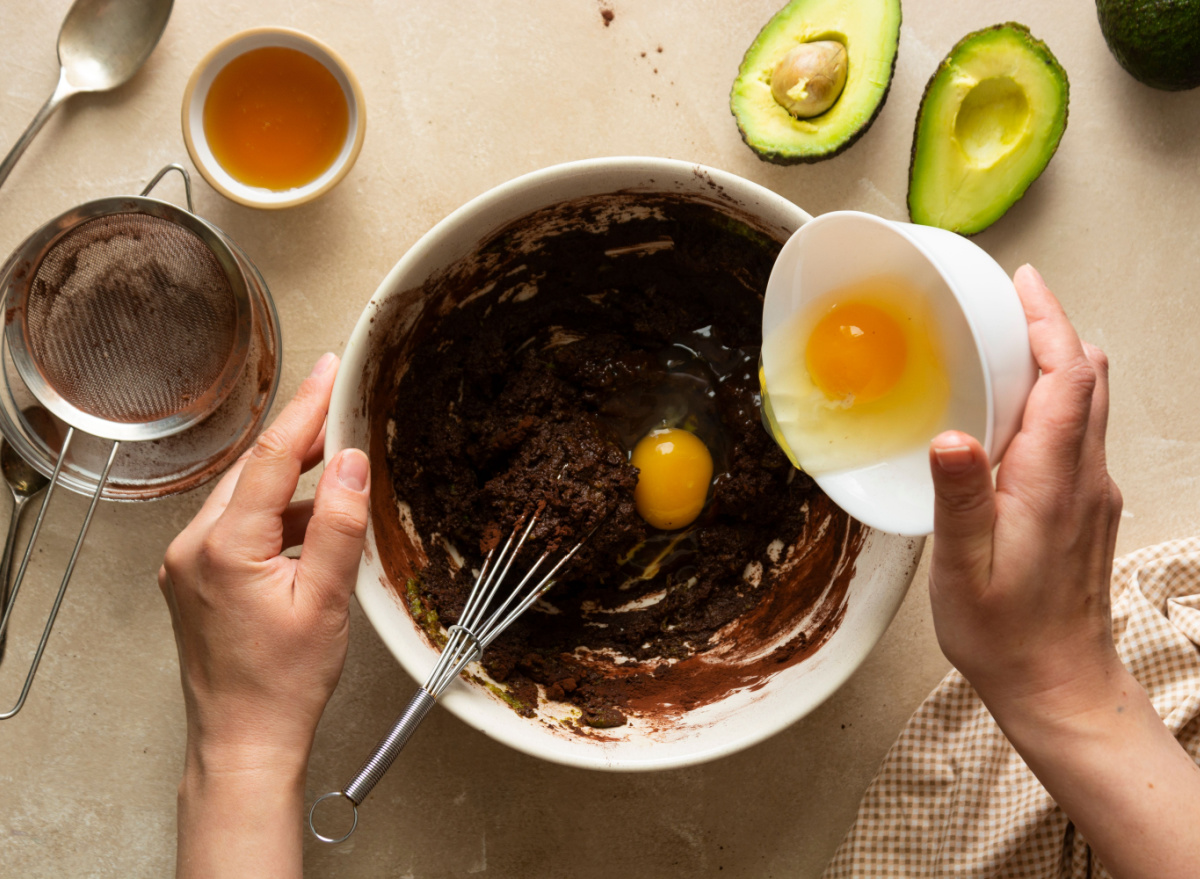
The holidays are synonymous with baking, and with so many family traditions carried out in the kitchen, it can be hard to balance healthy eating while spending quality time with your loved ones. The good news is you don’t have to give up one to focus on the other when you have a few easy recipe swaps able to make your holiday baking healthier up your sleeve.
Traditional baking ingredients—like oil, butter, and shortening—can be enjoyed in moderation, and there are simple swaps to use in your baked goods that make this task easy. While these healthier ingredients may not be in your grandmother’s brownie recipe, there is no shame in making a traditional treat a little more nutritious, especially when the final outcome is still quite tasty.
With that in mind, here are five easy recipe swaps to make your holiday baking healthier. And for savory recipe swaps to try this holiday season, check out 6 Healthy Ingredient Swaps Nutrition Pros Swear By for Their Holiday Recipes.
Swap oil for blended fruit.
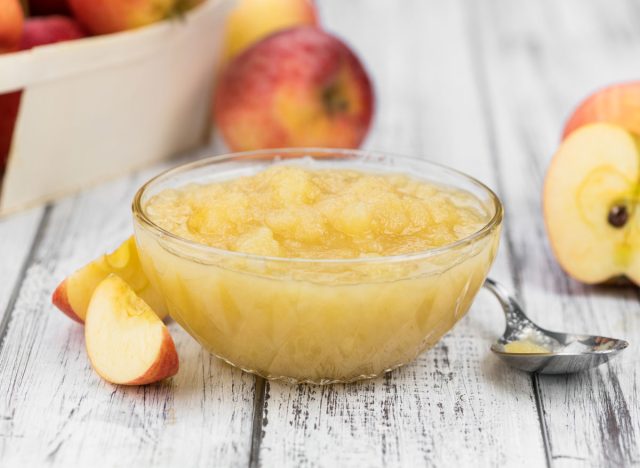
Whether you are making your family’s generational brownies or a new banana bread recipe, try swapping the vegetable oil for unsweetened applesauce. This is an easy swap as you can replace the oil in a one-to-one trade, no fancy math involved. So, if your recipe calls for ½ cup oil, swap that for half cup of applesauce. And, if you don’t have applesauce on hand, most mashed or pureed fruit will work. You could even use your kiddos’ blended fruit pouch in a pinch! Vegetable and canola oils are traditionally used in baking and possess fewer health benefits than other oils, like avocado and olive. Swapping these lower quality oils for blended fruit maintains moisture and flavor while adding some nutrients, too.
Swap egg for ground flax.
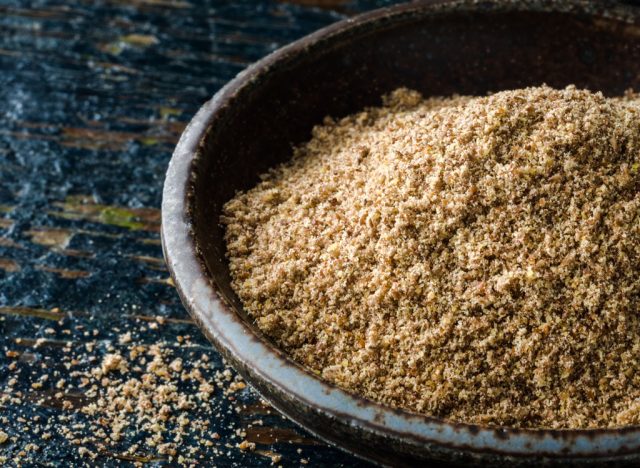
Often referred to as a “flax egg,” this is a super easy and nutritious way to make your baked goods a little healthier. Eggs possess valuable nutrients, like protein and choline, but if your vegan friend wants to enjoy your homemade cookies, you can easily trade the eggs for ground flax. Flax seeds contain fiber and essential omega-3 fats, and also provide a subtle nutty flavor. All you have to do is combine one tablespoon of ground flax with 2.5 tablespoons of water, give it a quick stir, and let stand for about five minutes while it thickens. Then use it in your recipe in place of one egg, or double the flax egg recipe if replacing two eggs. This is a great swap for your homemade muffins, chocolate chip cookies, or pancakes.
Use whole wheat flour in place of white.
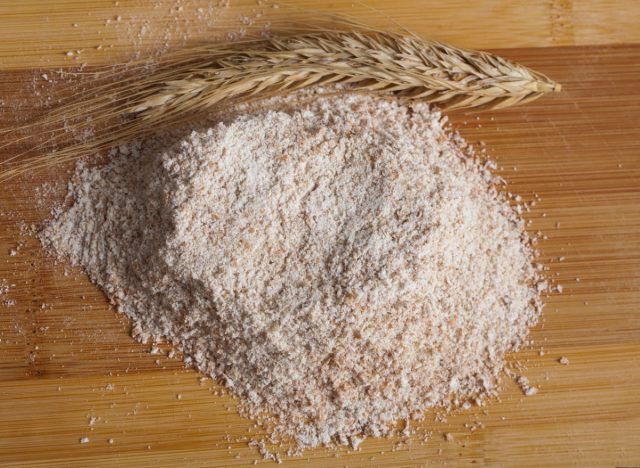
This may be a swap you have already tried or even currently use, and it is a great one for increasing fiber and even protein in a recipe. Most whole wheat flours also have more iron than white flour, and important nutrient for blood health. These nutrient properties make whole wheat a healthier option than white flour, and it is another easy one-ingredient swap. The higher protein content of whole wheat flour can lead to a denser texture, so this swap may be best for certain recipe, like quick breads and brownies. If you are unsure of this swap, you can start small. Swap half of the white flour in your recipe for equal amounts of whole wheat flour for a nutrient boost that likely won’t alter the texture of your baked goods.
Trade butter for avocado.
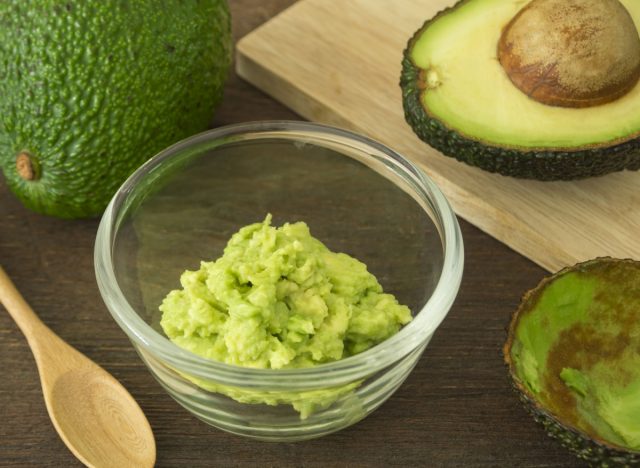
While butter gives baked goods the richness we all love, it is lacking in valuable nutrients. In fact, the saturated fat in butter is thought to play a negative role in heart health as it can raise blood cholesterol levels. On the other hand, avocado is thought to play a very positive role in heart health as it is packed with essential unsaturated fats that can lower cholesterol and reduce risk of a heart attack or stroke. Luckily, this is another easy swap to make. Simple use avocado in place of butter in a one-to-one ratio. Avocado can also be used in place of shortening in your baked goods, another ingredient with unfavorable fats. And, similar to the flour swap, you can ease into things with swapping only half of your butter or shortening for avocado.
Trade your milk chocolate for dark chocolate or cocoa nibs.
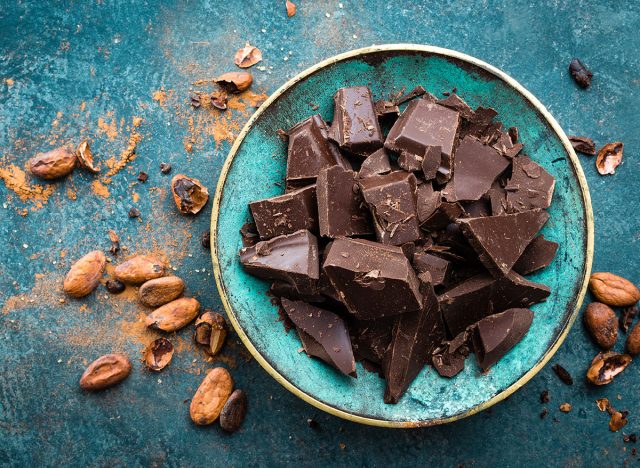
Speaking of chocolate chip cookies, this simple one-ingredient swap can reduce the sugar in your recipe and increase the number of beneficial antioxidants in your baked goods. The darker the chocolate, typically the less sugar the product contains. That means white and milk chocolate are likely to have more sugar per serving than dark chocolate, and semisweet is somewhere in the middle. Since your cookie recipe likely already uses one or two forms of sugar, you won’t even notice the lower sugar content in your chocolate chips. And, if you want to take it a step further, cocoa nibs contain zero sugar and are the healthier alternative to milk chocolate. This option is more bitter than using dark chocolate, but it provides the highest amount of health properties.